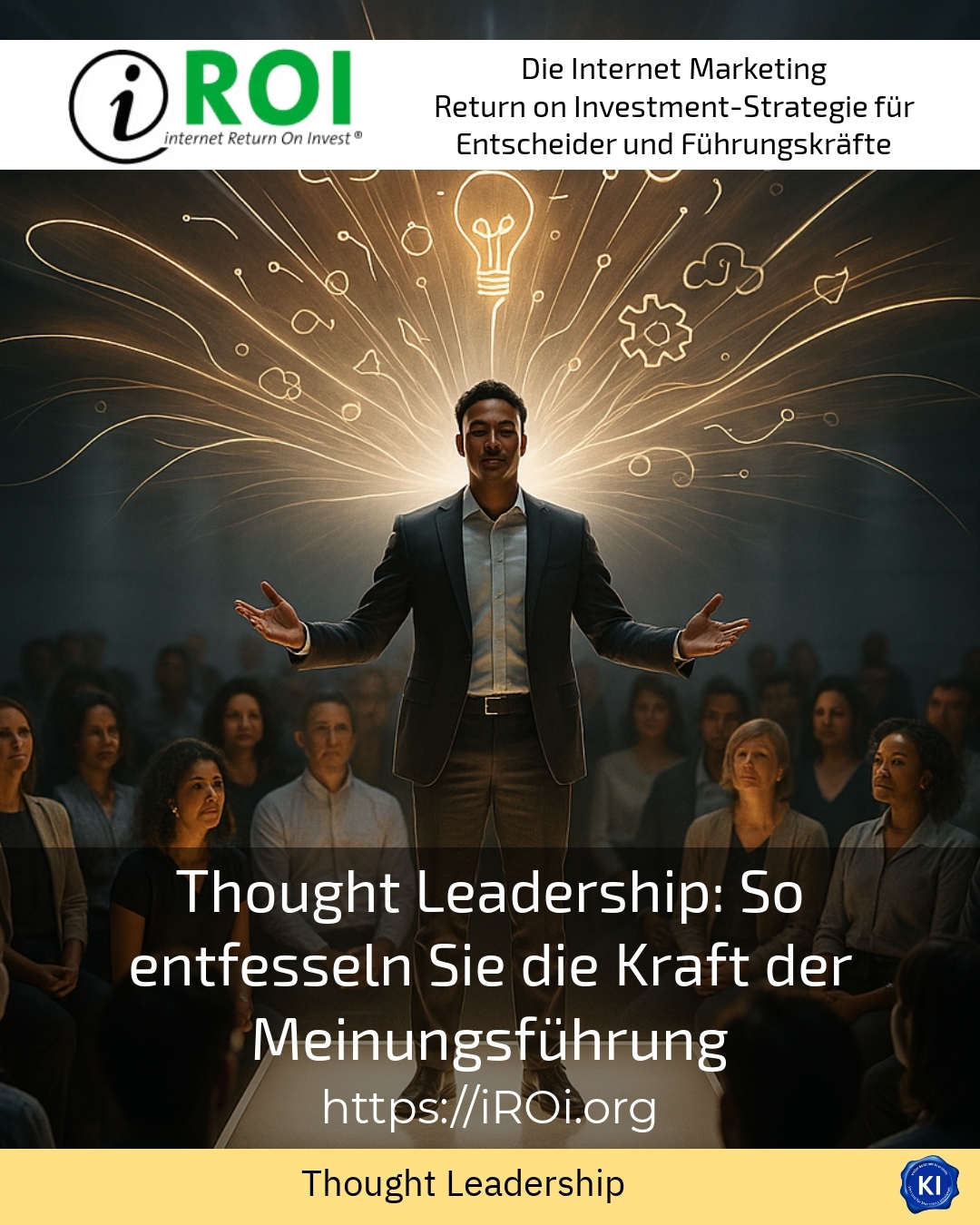Thought leadership is a strategy that helps to position oneself as a recognised authority in a specialist field. Companies and individuals can use this form of opinion leadership not only to convey expertise, but also to present innovative strength and vision. Through sound expertise and clear communication, new impulses can be set that have a lasting impact on their own market and industry.
What does thought leadership mean in practice?
Thought leadership arises when you establish yourself as a thought leader in your field and make a difference. It's not just about knowledge, but also about showing new ways and having the courage to change. Companies in the technology sector, such as Apple, have built a strong opinion leadership through a combination of innovation and clear communication. They are not just selling a product, but an idea - a forward-looking approach that has a lasting impact on the market.
In the financial sector, banks such as Deutsche Bank show how thought leadership can be achieved through the development of future-orientated financial products. This also includes proactively addressing socially relevant topics such as sustainability or digitalisation and supporting customers with expertise through content and seminars.
In the healthcare sector, for example, Philips provides thought leadership by combining innovative technologies with research findings to promote new standards in patient care. With elaborately designed webinars and expert forums, the company creates trust and inspiration at the same time.
The role of authenticity and trust in the process
Thought leadership depends on the trust of the target group. It is therefore important to remain authentic and not just appear to be an expert. In the SME sector in particular, many clients report that sustainable success in building opinion leadership often goes hand in hand with honest communication and consistent positioning. This makes it possible to build a loyal community and retain it in the long term.
There are many areas of application: consulting companies, for example, use their customer base to convey their own expertise in an appealing way through high-quality publications such as white papers and specialist articles. Automotive companies, on the other hand, rely on practical demonstrations of innovative technologies that not only inform, but also have an emotional impact.
One of the biggest challenges is not only to react to familiar topics, but also to recognise and help shape trends. iROI coaching supports companies in particular that want to develop thought leadership strategically and systematically. With targeted support, it is possible to efficiently implement opinion leadership projects and thus create sustainable added value.
BEST PRACTICE with one customer (name hidden due to NDA contract) The collaboration helped a medium-sized technology provider to make its expertise in the field of artificial intelligence visible. Through regular webinars and a strategically placed content series, decision-makers from different industries were targeted and a significantly higher lead generation was achieved. Particular emphasis was placed on clear, comprehensible communication and practical relevance.
Thought leadership as a dynamic process
Thought leadership is not a one-off project, but a continuous development process. In the creative industries, for example, agencies count on constantly addressing new topics and picking up on trends at an early stage. The regular publication of blog posts, podcasts or interviews with industry experts is a tried and tested means of doing this.
In mechanical engineering, sustainability is increasingly taking centre stage alongside technical innovation. Thought leaders from this sector are therefore focussing on a combination of technical depth and social relevance in order to clearly differentiate themselves.
Companies in the food industry also demonstrate thought leadership through topics such as health trends and sustainable production. This not only informs customers, but also creates an emotional bond with the brand, which is an important advantage, especially in highly competitive markets.
Recommendations for your opinion leadership
- First analyse the needs and challenges of your target group in detail.
- Develop content that answers these questions in a technically sound and practical manner.
- Use different formats such as articles, videos or live events to cater for different preferences.
- Remain consistent and communicate regularly to create and consolidate trust.
- Use the support of experienced consultants, such as iROI coaching, to realise your projects professionally.
My analysis
Thought leadership is an effective tool for establishing yourself as an opinion leader in the long term. It combines professional expertise with a spirit of innovation and requires you to continuously shape the dialogue with your target group. Success is demonstrated by how well you open up new perspectives and provide impetus. Through authentic and consistent communication, companies and individuals can build trust and help shape the industry. iROI coaching provides effective support along the way to turn ideas into genuine market leadership.
Further links from the text above:
Thought leadership for companies | Randstad
Thought Leadership Strategy: A Step by Step Guide For Growth
Thought leadership: How opinion leadership works - suxeedo
5 Excellent Thought Leadership Examples To Learn From - Brafton
How do you become a thought leader? | Haufe Media
Thought Leadership and Thought Leader Content | artundweise
Thought Leadership: Definition and Examples | University of Phoenix
How to Be a Thought Leader - Thought Leadership Strategy
Is „thought leadership“ just a buzzword? - HubSpot Blog
Thought Leadership: Definition and Examples | University of Phoenix
For more information and if you have any questions, please contact Contact us or read more blog posts on the topic internet Return on Investment - Marketing here.















